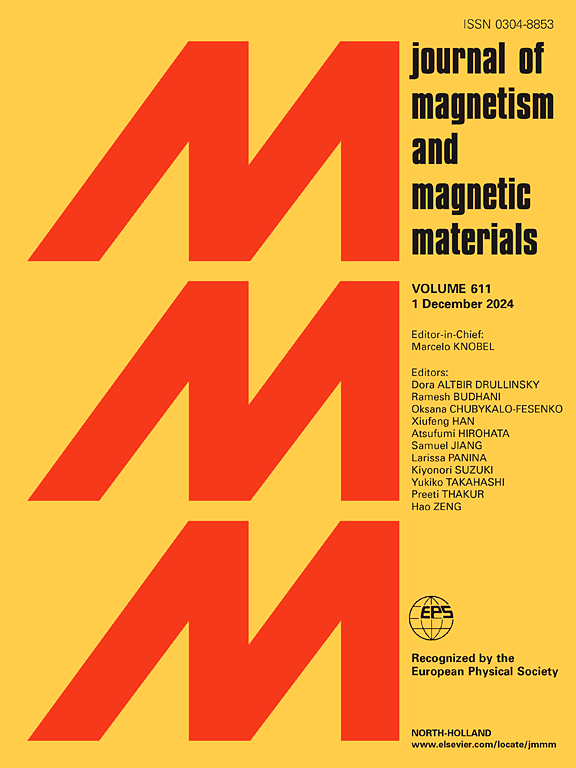Microfluidic-integrated SSPP sensor for rapid and sensitive label-free honey adulteration
IF 2.5
3区 材料科学
Q3 MATERIALS SCIENCE, MULTIDISCIPLINARY
引用次数: 0
Abstract
A Spoof surface plasmon polariton (SSPP) sensor is developed to identify honey samples by adding different concentrations levels of sugar (glucose and fructose). The SSPP-based sensor is integrated with a microfluidic reservoir to discriminate honey samples. The change in the resonating frequency shift with changed percentages of fructose and glucose levels of honey samples shows the performance of the SSPP sensor. This innovative approach presents a non-destructive, non-intrusive, label-free, rapid, and real-time methodology for analysing honey samples. The sensor exhibits exceptional sensitivity in detecting subtle differences in the dielectric constants of diverse samples. We systematically investigate the impact of distinct geometrical parameters on the sensor’s performance, focusing on optimizing its characteristics. A distinctive pentagon-shaped unit cell (UC) for the SSPP construction is thoroughly explored, revealing its unique performance and sensing capabilities. We construct a multilayer SSPP microwave structure with a pentagon unit cell to create a functional sensing platform for honey samples. The transient solver is used for computational analysis. Our results indicate a remarkable sensitivity of 1522 MHz/epsilon unit, with a correlation coefficient (R2) of 0.9367, for discerning between different dielectric samples ranging from 1 to 5 for normal pentagon unit cells. Additionally, for vertex-based pentagon unit cells, the sensor demonstrates a sensitivity of 1105 MHz/epsilon unit, with an R2 of 0.9524, when applied dielectric constants within the range of 1–5. These simulation outcomes highlight the viability of the suggested SSPP-inspired sensor as a promising solution for monitoring applied dielectric quality and characterizing the honey sample’s dielectric constants. This integrated approach showcases the potential to revolutionize quality assessment within the realm of honey production and diverse materials through its advanced sensing capabilities.
用于快速灵敏无标签蜂蜜掺假的微流控集成SSPP传感器
通过添加不同浓度的糖(葡萄糖和果糖),开发了一种欺骗表面等离子激元极化子(SSPP)传感器来识别蜂蜜样品。基于sspp的传感器与微流体储层集成以区分蜂蜜样品。谐振频移随蜂蜜样品中果糖和葡萄糖含量百分比的变化表明了SSPP传感器的性能。这种创新的方法为分析蜂蜜样品提供了一种非破坏性、非侵入性、无标签、快速和实时的方法。该传感器在检测不同样品介电常数的细微差别方面表现出非凡的灵敏度。我们系统地研究了不同几何参数对传感器性能的影响,重点是优化其特性。深入探讨了用于SSPP结构的独特五角形单元格(UC),揭示了其独特的性能和传感能力。我们构建了一个五边形单元胞的多层SSPP微波结构,建立了一个蜂蜜样品的功能传感平台。采用瞬态求解器进行计算分析。结果表明,该方法对普通五边形单元胞的介电样品的灵敏度为1522 MHz/epsilon单位,相关系数(R2)为0.9367。此外,对于基于顶点的五边形单元格,当施加介电常数在1-5范围内时,传感器的灵敏度为1105 MHz/epsilon单位,R2为0.9524。这些模拟结果强调了建议的sspp启发传感器作为监测应用介质质量和表征蜂蜜样品介电常数的有前途的解决方案的可行性。这种综合方法展示了通过其先进的传感能力在蜂蜜生产和各种材料领域内彻底改变质量评估的潜力。
本文章由计算机程序翻译,如有差异,请以英文原文为准。
求助全文
约1分钟内获得全文
求助全文
来源期刊

Journal of Magnetism and Magnetic Materials
物理-材料科学:综合
CiteScore
5.30
自引率
11.10%
发文量
1149
审稿时长
59 days
期刊介绍:
The Journal of Magnetism and Magnetic Materials provides an important forum for the disclosure and discussion of original contributions covering the whole spectrum of topics, from basic magnetism to the technology and applications of magnetic materials. The journal encourages greater interaction between the basic and applied sub-disciplines of magnetism with comprehensive review articles, in addition to full-length contributions. In addition, other categories of contributions are welcome, including Critical Focused issues, Current Perspectives and Outreach to the General Public.
Main Categories:
Full-length articles:
Technically original research documents that report results of value to the communities that comprise the journal audience. The link between chemical, structural and microstructural properties on the one hand and magnetic properties on the other hand are encouraged.
In addition to general topics covering all areas of magnetism and magnetic materials, the full-length articles also include three sub-sections, focusing on Nanomagnetism, Spintronics and Applications.
The sub-section on Nanomagnetism contains articles on magnetic nanoparticles, nanowires, thin films, 2D materials and other nanoscale magnetic materials and their applications.
The sub-section on Spintronics contains articles on magnetoresistance, magnetoimpedance, magneto-optical phenomena, Micro-Electro-Mechanical Systems (MEMS), and other topics related to spin current control and magneto-transport phenomena. The sub-section on Applications display papers that focus on applications of magnetic materials. The applications need to show a connection to magnetism.
Review articles:
Review articles organize, clarify, and summarize existing major works in the areas covered by the Journal and provide comprehensive citations to the full spectrum of relevant literature.
 求助内容:
求助内容: 应助结果提醒方式:
应助结果提醒方式:


